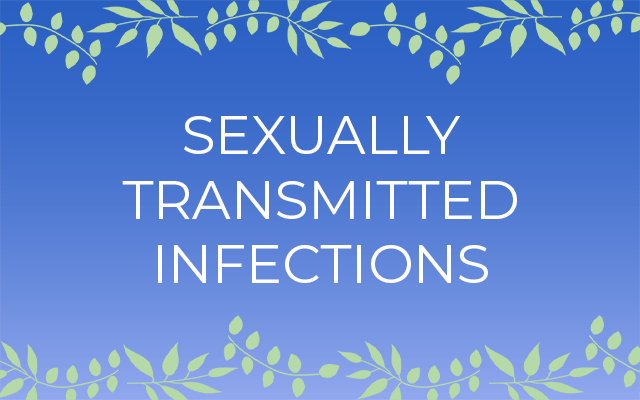Anogenital warts (Condylomata acuminata) are still the most common clinical presentation of HPV infections. However, in recent decades, other HPV-associated lesions such as Condylomata plana, penile, scrotal, and anal intraepithelial neoplasias, as well as penile, tonsillar and oropharyngeal cancers have been studied more extensively.
More than 35 types of HPV infect the genital tract, with type 16 and 18 inducing about 70% of high-grade intraepithelial genital neoplasias and HPV 6 and 11 causing 90% of anogenital warts.
Ultimately, within the spectrum of therapeutic options for condylomata, there is not one which is superior to others; recurrences occurs in 30-70% of cases. However, the combination of the ablative and immunomodulatory treatment (imiquimod, sinecatechins) may be currently considered the treatment of choice.
An HPV vaccination programme however, is needed in order to decrease the number of infections. In addition, proper dermatological training is required since HPV-induced lesions often get misdiagnosed unless managed by a skilled professional.
Treatment-resistant gonorrhea
With more than 82 million new cases in 2020, gonorrhea remains a major public health concern. Unsuccessfully treated gonococcal infections may have critical complications, including a fivefold increase in HIV transmission, infertility, acute and chronic lower abdominal pain in women, ectopic pregnancy, first trimester abortion and maternal death.
Antimicrobial resistance (AMR) in Neisseria gonorrhoeae emerged soon after antibiotics started to be used for gonorrhea treatment and it has expanded over the past 80 years. It affects drugs such as penicillins, sulphonamides, tetracyclines, quinolones and macrolides (including azithromycin), as well as so-called last line options such as cephalosporins. In the past decade, confirmed failure to cure gonorrhea with ceftriaxone alone or combined with azithromycin or doxycyline has been reported in Australia, France, Japan, Slovenia, Sweden and the United Kingdom. Most data on this issue comes from higher income countries; however, the majority of cases of gonorrhea are in less resourced countries and areas. This suggests that reports of treatment failures and drug resistance in wealthier areas are only the tip of the global health burden.
All confirmed treatment failures except one recent case in the United Kingdom have been related to pharyngeal infections. The majority of infections in the pharynx are asymptomatic. Antimicrobial drugs don’t penetrate the tissue well in that area, and the pharynx is also home to naturally occurring related bacteria of the Neisseria species that can contribute to drug resistance.
In Europe, the decreasing azithromycin susceptibility combined with the continued detection of ceftriaxone resistance is a major concern and threatens the efficacy of the highly effective dual-therapy regimen (ceftriaxone plus azithromycin) and high-dose ceftriaxone monotherapy recently adopted by some European countries. Even though the level of resistance to cefixime has significantly decreased, cefixime resistance needs to be monitored closely, particularly because gonococcal strains with resistance to both cefixime and ceftriaxone continue to spread internationally.
Management of recurrent genital herpes
Herpes simplex virus infection is highly prevalent in the population and responsible for a lifelong infection. Both herpes simplex virus type 1 (HSV-1) and herpes simplex virus type 2 (HSV-2) can cause severe disease, such as encephalitis, meningitis or eye infection (keratoconjunctivitis, retinitis) even in immunocompetent adults and newborns, while disseminated infections with visceral involvement (oesophagus, lung, liver) may occur in immunosuppressed individuals. However, the most common clinical manifestations are localized on skin and mucous membranes, appearing as gingivostomatitis, herpes labialis or facialis, eczema herpeticum and genital herpes.
Primary genital herpes is caused both by HSV-1 and HSV-2. Even though HSV-2 is responsible for most cases of recurrent genital herpes, there is an increasing tendency of anogenital herpetic infection attributed to HSV-1, especially among young women. The classic clinical symptoms are characterized by burning, tingling sensation, while vesicles, pustules and ulcers are rare. However, most of the patients have minimal or no symptoms, but have asymptomatic viral shedding with occasional recurrences. Most genital herpes infections are transmitted by these people since they are unaware of their condition.
HSV-1 is mainly responsible for more severe primary episodes with lower recurrence rates, less asymptomatic shedding and less transmission efficiency. HSV-2 has higher transmission efficiency, with higher number of recurrences and asymptomatic shedding.
Recommended diagnostic methods are different in case of presence or absence of genital lesions. In case of genital ulcers or other mucocutaneous lesions, type-specific virologic tests like PCR or viral culture should be performed, while in the absence of genital lesions, type-specific serologic tests should be requested. Most of them are based on the detection of HSV-specific glycoprotein G2 (HSV-2) and glycoprotein G1 (HSV-1). The sensitivity of these tests is high, but the specificity is low, therefore, in order to rule out false-positive cases, a confirmatory test with a second method should be performed before test interpretation.
Acyclovir, valacyclovir and famcyclovir are recommended for the treatment of primary episode and recurrent genital herpes in different dosages and period. In case of recurrent genital herpes, antiviral therapy can be applied as suppressive therapy to reduce the frequency of recurrences or episodically to shorten the duration of symptoms.


Mihael Skerlev
(Zagreb, Croatia)


Electra Nicolaidou
(Athens, Greece)


Emese Gellen
(Bocskaikert, Hungary)


